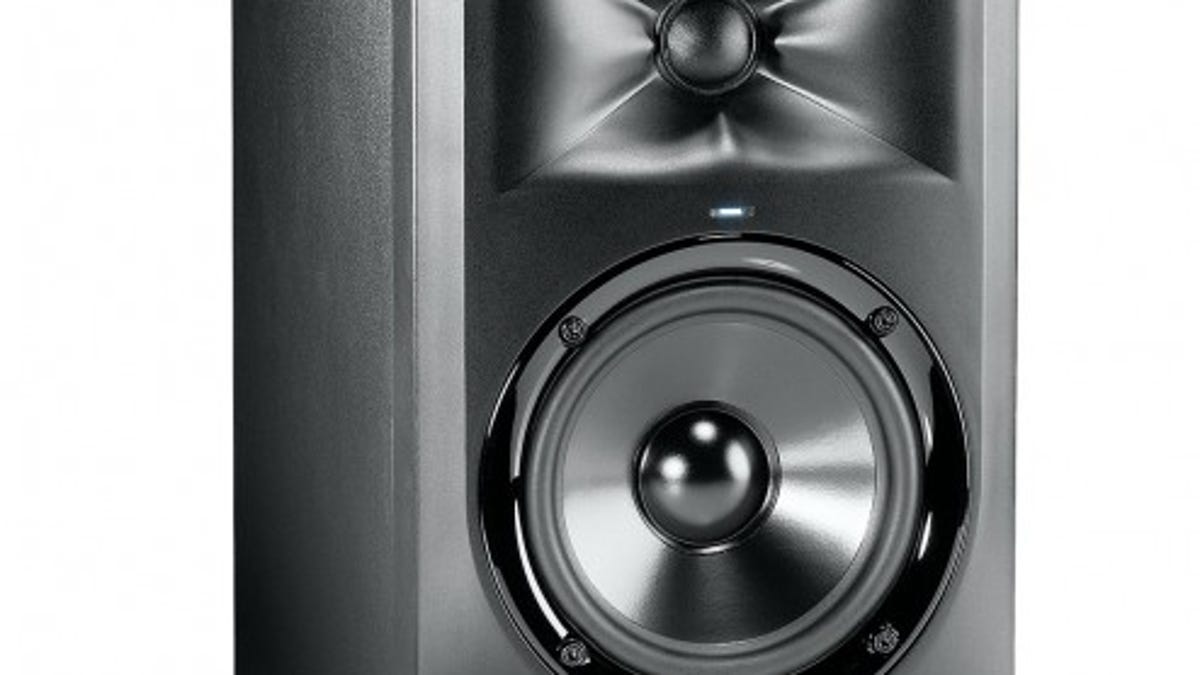 Why You Can Trust CNET
Why You Can Trust CNET JBL LSR305: Resetting sound expectations for desktop speakers
JBL's nifty powered speakers' innovative tech puts it ahead of the pack, making the LSR305 a force to be reckoned with.

The way I see it, JBL's LSR305 stands near the top of the heap for under $500 (per pair) desktop monitors for its remarkable sound quality. The LSR305 is a breakthrough product, the $199 speaker price (per speaker), puts it right in the middle of the highly competitive audiophile desktop market, but it's easy to find the LSR305 selling for $120, just $240 a pair! That's under Audioengine's and Emotiva's entry-level speakers' prices!
The deeply recessed "waveguide" surrounding the tweeter is the first tip-off the LSR305 is special. The guide focuses and controls the tweeter's dispersion, and how the speaker projects sound forward into the room. The LSR305's woofer was designed to match the tweeter's dispersion, so the blend between the two drivers is perfect.
With good recordings the speakers produce a sense of spatial depth, and the stereo soundstage spreads wider than the actual locations of the two LSR305s. The stereo "picture" is clearer with the LSR305 than most other desktop speakers I've tried at home. It's a near-field monitor, designed to sound great from as little as 36 inches away, but the LSR305s also sound great as stereo hi-fi speakers.
The speaker's 5-inch woofer and 1-inch tweeter each have their own built-in, 41-watt, Class-D power amplifiers. Connectivity is designed for professional users, so the LSR305 doesn't have RCA inputs, just XLR and TRS 1/4-inch input jacks. The connectivity work-around solution is simple enough, just buy a $6 RCA-to-1/4-inch plug cable to hook up the LSR305s to a consumer desktop system. The speaker has bass and treble "trim" switches, so you can fine-tune the tonal balance to taste. The LSR305 measures 11.8 inches high by 7.3 inches wide by 9.9 inches deep, and it weighs just over 10 pounds. There's a rear mounted bass port, so you'll need to place the speakers at least six inches away from the wall for best sound.
Each LSR305 is subjected to a grueling power test, where the speaker plays at the maximum volume level for 100 hours. That weeds out any possible weaknesses in the production units.
One small fault was a very small amount of hiss/noise coming from the LSR305s, but once music was playing you won't notice the noise. Many other self-powered speakers have noise issues. The LSR305's noise is less noticeable than most.
The LSR305 is a powerhouse, it handles high decibel rock better than most, dynamic impact is extraordinary for a small speaker, and deep bass prowess and definition score high. On a desktop, listening from three or four feet away, the LSR305 is a real party animal!
Ah, but the stereo imaging abilities with audiophile recordings demonstrate this is no one-trick pony. Classical recordings sound natural; the LSR305's rich tonality really shines with all types of program material. Vocals are beautifully handled by the LSR305.
So I was eager to hear how the LSR305s would stack up when compared with my desktop reference Adam Audio F5speakers ($499 per pair). Well, the F5s have a sweeter/warmer balance, which I like, but the F5s couldn't match the LSR305s on rock. The F5s inhibited rock's dynamic punch and softened bass definition. Their imaging was more spacious. Each speaker had its strengths, but considering the LSR305s can be bought for less than half the price of the F5s, there's a lot going in the LSR305s favor.

